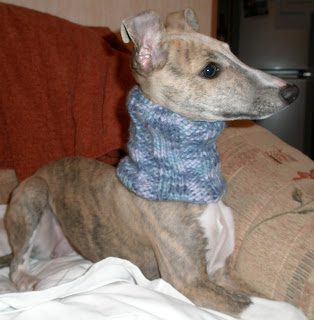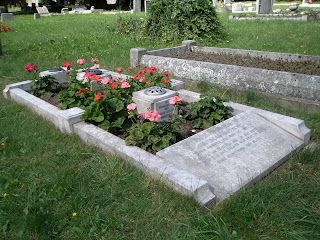You want to give to charity, but your pockets aren't as full as your heart is. Luckily, giving money isn't the only option...
Open an ActionAid Credit Card - ActionAid will recieve £15 for each account that is opened, a further £2.50 if the account is used within 6 months, plus 25p for every £100 spent using the card and 25p for every £100 transferred to the card. ActionAid is a partnership between people in rich and poor countries dedicated to ending poverty and injustice. ActionAid works with local people to fight hunger and disease, seek justice and education for women, and cope with emergencies in over 40 countries.
Recycle for MAG - You can raise money for MAG (Mines Advisory Group) and help the environment at the same time by recycling your inkjet and laser cartridges. MAG will provide recycling bags, collection boxes and posters to help you collect and send back eligible items. MAG (Mines Advisory Group) is an humanitarian organisation who work in current and former conflict zones to reduce the threat of death and injury by clearing the remnants of conflict.
Volunteer at Festivals with Oxfam - Oxfam attends the UK’s biggest and best festivals and you can join the team of Oxfam stewards, campaigners and shop volunteers. You’ll see live music from the inside, helping make it all happen. In return you’ll get hot food, warm showers and exclusive staff camping. Better still, you’ll be raising money to fight poverty while you’re at it. Win-win! ;-)
Recycle your Old or Unwanted Glasses - You can donate your glasses to Vision Aid Overseas via collection boxes at your local opticians. Prisoners in the UK have been trained to help prepare the glasses for use in the developing world by cleaning, grading and packing them. The glasses are only dispensed after a full eye examination and great care is taken to match them to the patient.
Donate Your Undies! - In Africa, underwear is prohibitively expensive for most women with prices being as high as 2 weeks' wages for a used pair of knickers, and yet it is the main protection against violent sexual assault. Young girls are less likely to be abused or raped if they are wearing underwear, but a lot of families only have one pair of knickers to share between them! You can help by donating new/used bras and new knickers.
Kiva is a cool charity with a brilliant idea! They match you (and your spare dollars) with pre-screened hard-working entreprenuers in the developing world who hope to create proper incomes by starting their own businesses. All they need is a small loan from you - anything from $25 to $000s. 12 - 15 months later, when that person has a successful business, Kiva will collect the money back in small installments and will pay you back! You can then lend the money out again to someone else if you wish. Kiva is not just about you giving to charity; it's about lending to someone... then lending the same money again, and again, and again... You make a real ongoing difference and you grant people dignity. Cool or what?
Locks of Love accepts ponytail donations and uses them to create hairpieces for disadvantaged children suffering from medical hair loss. Go for that new, short haircut you've been eyeing up, then send them your 10-inch (minimum) ponytail or braid.
Send a Shoebox! - Wrap, pack and send a shoebox full of gifts and goodies and give joy to a child overseas! In 2009, over 1.18 million shoeboxes were sent to children in disadvantaged situations in Africa, Eastern Europe and Central Asia through "Operation Christmas Child" by adults and children in the UK.
Can you knit? - Even beginners can get involved with the Knit-a-Square project, which is aiming to collect 105,000 squares in 2010 which will be made into 3000 blankets for AIDS orphans in South Africa... Another alternative is the Baby Pack Project which aims to provide under-privileged mothers of newborn babies on the lower south coast of Kwa Zulu Natal (South Africa) with a pack of the most basic items needed for a new-born baby. The project came about when a local lady saw newborn babies leave Ntabeni clinic in Kwa Zulu Natal wrapped in newspaper because the mothers had nothing else to wrap them in! You can help by knitting items to be included in the packs, such as baby cardigans and hooded wraps... Wool can be bought very cheaply at charity shops, and that way you'll be helping another charity too!
"Re-Cycle" your Bicycle! - Re-Cycle collect secondhand bicycles and ship them to Africa where they are distributed and the riders are taught the skills needed to repair and maintain them. Many people in Africa have no access to transport of any kind, and yet transport and development go hand-in-hand. Virtually everything traded, must be transported, and almost everyone needs wheels to get to work or school. Simple, affordable transport generates wealth in developing countries, as well as saving lots of time and back-breaking work. Walking can take up-to 4 hours per day (collecting water, or walking to school). The burden can cripple a family, hampering work and education opportunities. A bicycle cuts travel time to a fraction, even carrying passengers and heavy loads. Bikes give families the extra time to earn, learn and enjoy life. Donated bikes have also been used to help health/AIDS workers reach remote villages and even provide an ambulance service in remote Namibia.
Host a Child Victim of Chernobyl - The Chernobyl Children’s Lifeline charity bring about 3,000 children a year to the UK for respite care. Volunteer families welcome the children (usually in pairs) into their homes as part of their own family and help to give them a holiday to remember as well as a tremendous boost to their immune systems. It is estimated that one month staying with a family here, eating nourishing food, resting from the relentless radiation and breathing clean air can add up to two years to their life expectancy, and improve their education over the next two years. There is a lot of support for host families and the charity arranges group activities and outings for the children. Each child gets to visit the dentist and optician during their stay and the charity also provides on-going supplies of multi-vitamins and basic healthcare products to the children on their return.








